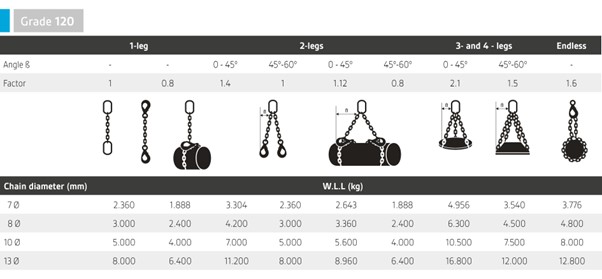The differences between Grade 8, Grade 10 & Grade 12
Grade 8, 10, and 12 are the crack resistance classes of steel to be used in lifting chains, steel cables, and other similar structures. The higher the grade, the higher the toughness of the material to crack.
Grade 8
Grade 8 steel is one of the most commonly used materials for chain slings and is well-suited for most applications. It is strong, durable, and has excellent corrosion resistance. However, it is not suitable for heavy and dangerous applications where the lifting chain has to be loaded under high pressure.
Grade 10
Grade 10 steel is even tougher than grade 80 steel and is specifically designed for the most demanding applications. For example, it is suitable for lifting heavy and dangerous loads in the offshore industry and has a higher breaking strength. However, it is slightly less corrosion-resistant than grade 80 steel.
Grade 12
Grade 12 steel is the strongest and most demanding material for lifting chains. It is designed for exceptionally heavy-duty applications where the lifting chain has to be loaded under very high tension. It has a very high breaking strength, making it extremely suitable for lifting heavy equipment in the mining and oil and gas industries. However, it is also the most expensive and has reduced corrosion resistance compared to the other grades of steel.
Powerful lifting chains
Lifting chains with grade 12 steel are so strong that with a lifting chain diameter of 13 mm, the working load limit is the same as with a grade 8 lifting chain with a diameter of 16 mm. Because the diameter is smaller, the chain takes up less space and is easier to store and transport. A smaller diameter reduces the risk of injury and damaging the surrounding area. As the chain weighs less, the comfort of use is significantly increased. Added to this is the increased precision during use. The smaller diameter chain allows lifting with more precision, which increases performance.
In conclusion
In conclusion, lifting chains with grade 8, grade 10 or grade 12 steel are different from each other in terms of strength, breaking strength, corrosion resistance, and cost. Depending on the specific application and requirements, these factors should be considered when choosing the right material for lifting chains.
See below a table showing the different workloads for each chain sling assembly.






